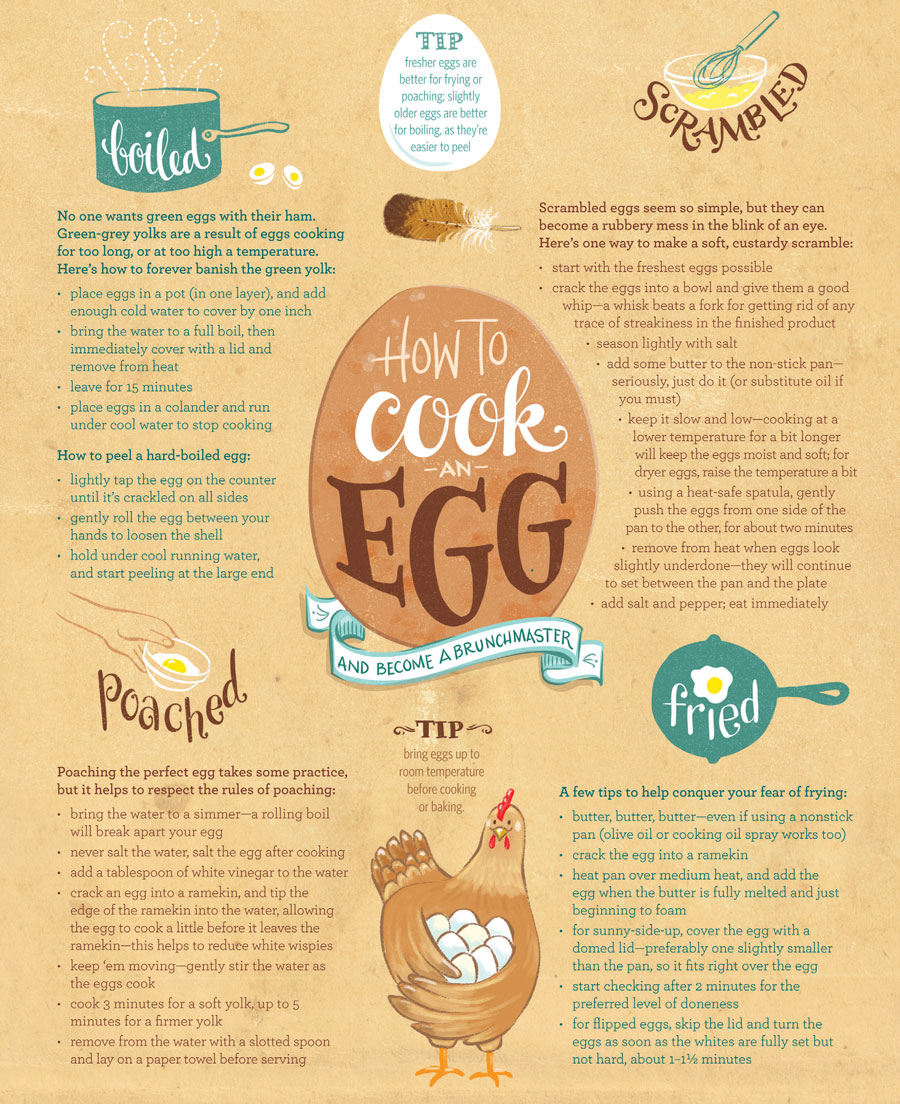edible ink
How to Cook an Egg

How to Cook an Egg (and Become a Brunchmaster)
Tip: fresher eggs are better for frying or poaching; slightly older eggs are better for boiling, as they're easier to peel
Boiled:
No one wants green eggs with their ham. Green-grey yolks are a result of eggs cooking for too long, or at too high a temperature. Here's how to forever banish the green yolk:
- place eggs in a pot (in one layer), and add enough cold water to cover by one inch
- bring the water to a full boil, then immediately cover with a lid and remove from heat
- leave for 15 minutes
- place eggs in a colander and run under cool water to stop cooking
How to peel a hard-boiled egg:
- lightly tap the egg on the counter until it's crackled on all sides
- gently roll the egg between your hands to loosen the shell
- hold under cool running water, and start peeling at the large end
Poached:
Poaching the perfect egg takes some practice, but it helps to respect the rules of poaching:
- bring the water to a simmer—a rolling boil will break apart your egg
- never salt the wter, salt the egg after cooking
- add a tablespon of white vinegar to the water
- crack an egg into a ramekin, and tip the edge of the ramekin into the water, allowing the egg to cook a little before it leaves the ramekin—this helps to reduce white wispies
- keep 'em moving—gently stir the water as the eggs cook
- cook 3 minutes for a soft yolk, up to 5 minutes for a firmer yolk
- remove from the watr with a slotted spoon and lay on a paper towl before serving
Tip: bring eggs up to room temperature before cooking or baking.
Scrambled:
Scrambled eggs seem so simple, but they can become a rubbery mess in the blink of an eye. Here's one way to make a soft, custardy scramble:
- start with the freshest eggs possible
- crack the eggs into a bowl and give them a good whip—a whisk beats a fork for getting rid of any trace of streakiness in the finished product
- season lightly with salt
- add some butter to the non-stick pan—seriously, just do it (or substitute oil if you must)
- keep it slow and low—cooking at a lower temperature for a bit longer will keep the eggs moist and soft; for dryer eggs, raise the temperature a bit
- using a heat-safe spatula, gently push the eggs from one side of the pan to the other, for about two minutes
- remove from heat when eggs look slightly underdone—they will continue to set between the pan and the plate
- add salt and pepper; eat immediately
Fried:
A few tips to conquer your fear of frying:
- butter, butter, butter—even if using a nonstick pan (olive oil or cooking spray works too)
- crack the egg into a ramekin
- heat pan over medium heat, and add the egg when the butter is fully melted and just beginning to foam
- for sunny-side up, cover the egg with a domed lid—preferably one slightly smaller than the pan, so it fits right over the egg
- start checking after 2 minutes for the preferred level of doneness
- for flipped eggs, skip the lid and turn the eggs as soon as the whites are fuly set but not hard, about 1-1.5 minutes




